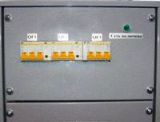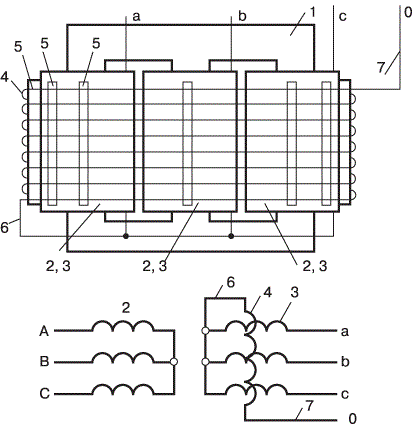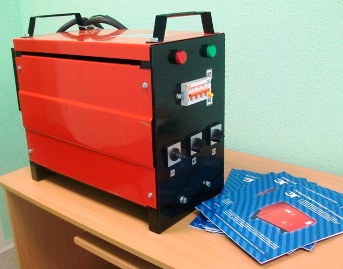Balancing transformers
 The voltage between each phase of the three-phase AC network and the neutral wire is ideally 220 volts. However, when different loads, different in nature and size, are connected to each of the phases of the power network, sometimes quite a significant imbalance of phase voltages occurs.
The voltage between each phase of the three-phase AC network and the neutral wire is ideally 220 volts. However, when different loads, different in nature and size, are connected to each of the phases of the power network, sometimes quite a significant imbalance of phase voltages occurs.
If the load resistances were equal, the currents flowing through them would also be equal to each other. Their geometric sum would be zero. But as a result of the inequality of these currents in the neutral wire, an equalizing current arises (the zero point is shifted) and a deviation voltage appears.
The phase voltages change relative to each other and a phase imbalance is found... The consequence of such a phase imbalance is an increase in electricity consumption from the network and improper operation of electrical receivers, which leads to breakdowns, damage and premature wear of the insulation. In such a situation, the safety of users is compromised.
For autonomous three-phase power sources, the uneven load of the phases is fraught with all kinds of mechanical damage. As a result, there is a malfunction of electrical receivers, deterioration of power sources, increased consumption of oil, fuel and coolant for the generator. In the end, the costs of both electricity in general and consumables for the generator increase.
To eliminate the phase unbalance, equalize the phase voltages, you must first calculate the load currents for each of the three phases. However, it is not always possible to do this in advance. On an industrial scale, losses due to phase voltage unbalance can be simply colossal, and the economic effect to some extent devastating.
To eliminate negative trends, you need to apply phase balancing... For this purpose, so-called balun transformers are used.
In a three-phase transformer, the phase windings of both the higher and lower voltage are star-connected, an additional balancing device is built in in the form of an additional winding that surrounds the high-voltage windings. This additional winding is designed to withstand the continuous current of the rated load of the transformer, ie. for the rated current of one phase. The winding is included in the neutral wire break of the transformer from the following calculation.
In the case of equalizing current in the neutral conductor, due to an unbalanced load, the zero-sequence fluxes in the magnetic circuit (windings of the operating transformers) will be fully compensated by the oppositely directed zero-sequence fluxes of the balancing winding. After all, phase voltage unbalance is completely prevented.
The wiring diagram of the windings of a three-phase phase-balancing transformer is shown in Figure 1.

Rice. 1. The device of the balancing transformer
1) Three-stage magnetic circuit of a three-phase transformer.
2) High voltage coils.
3) Low voltage windings.
4) Winding from compensating turns.
5) Spacing wedges.
6) The end of the compensating winding connected to the neutral part of the low voltage windings.
7) The end of the compensation coil that is brought out.
The energy characteristics of such transformers, idle losses, short circuit and others, since the addition of a balancing device, almost does not change, but the electricity losses in the network are greatly reduced. With non-uniform phase loading, the phase voltage system is symmetrical in the same way as when connecting the windings according to the star-zigzag scheme.

Balancing transformer TST
The calculations and experiments of the researchers showed that with the correct matching of the turns of the compensation and working windings, the voltage on the compensation winding of the transformer with the balancing device, equal to the rated current in the neutral conductor, reaches the value of the rated phase voltage balancing on the neutral part of the windings with low zero-sequence EMF voltage arising from the operating windings to zero.
This design significantly reduces the zero-sequence resistance of a three-phase power transformer. This gives a significant increase in single-phase short-circuit currents and is one of the main advantages of balun transformers, as it provides reliable and easy adjustment relay protection and its reliable short-circuit operation.
In addition, the destructive effect of a large single-phase short-circuit current on the windings of such a balancing transformer is much less than the short-circuit current in the absence of a balancing winding, since the destructive powerful zero-sequence asymmetric flux is now fully compensated.
